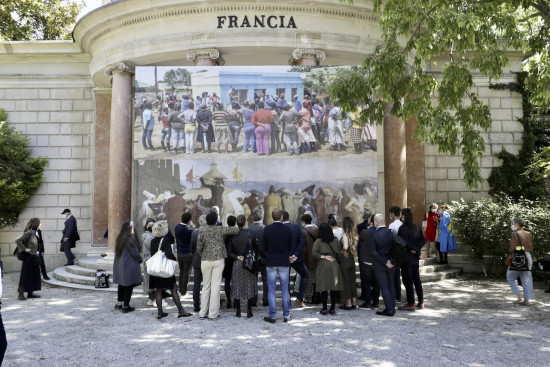
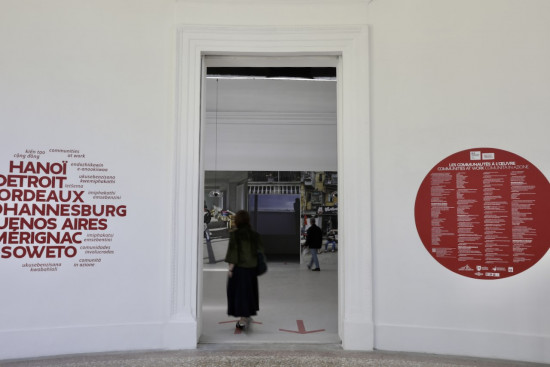
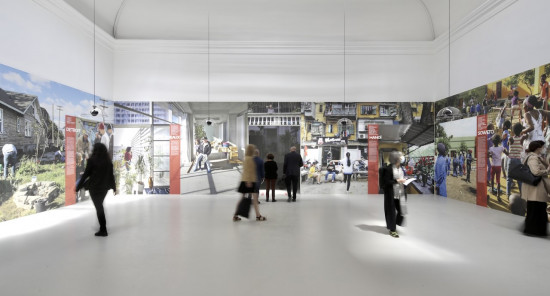
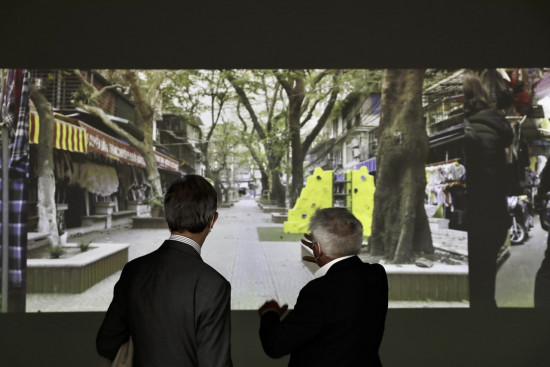
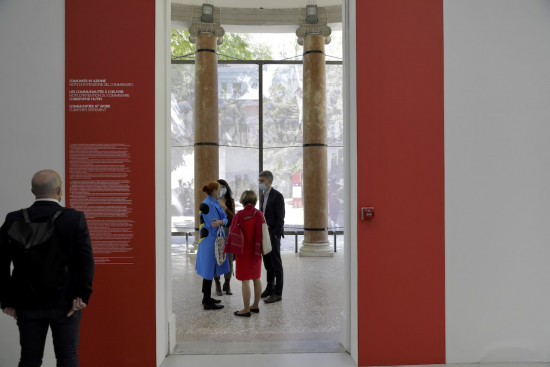
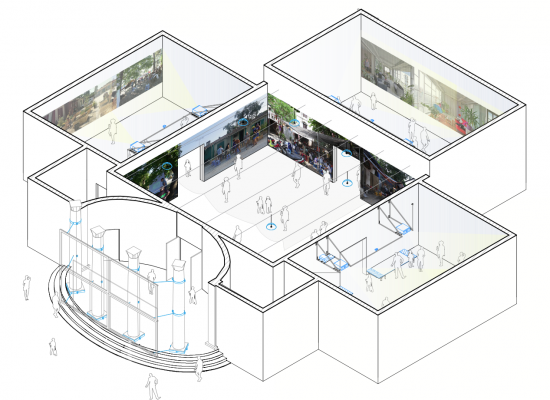
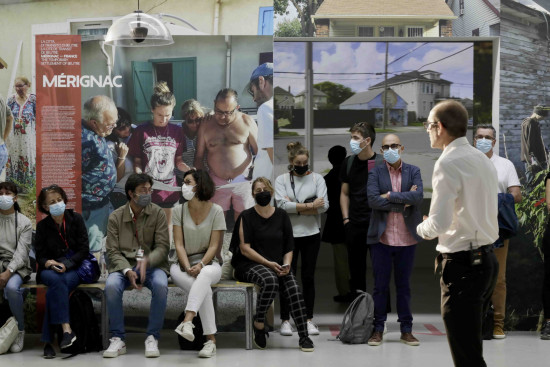
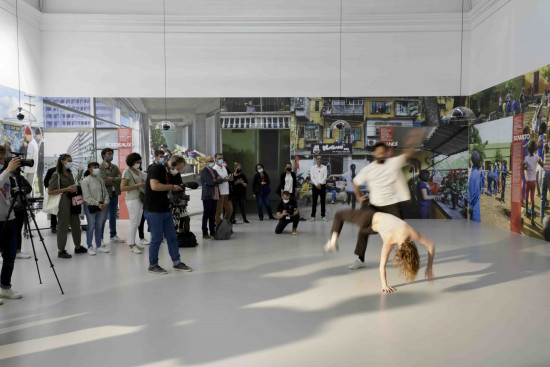
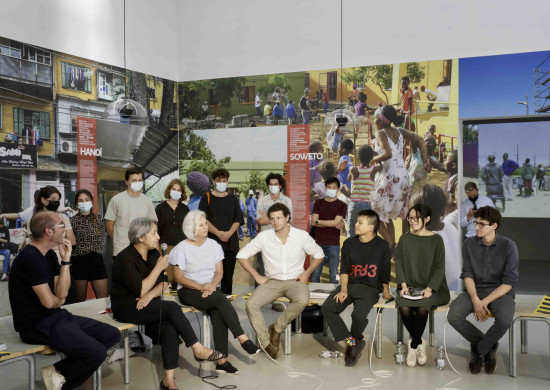
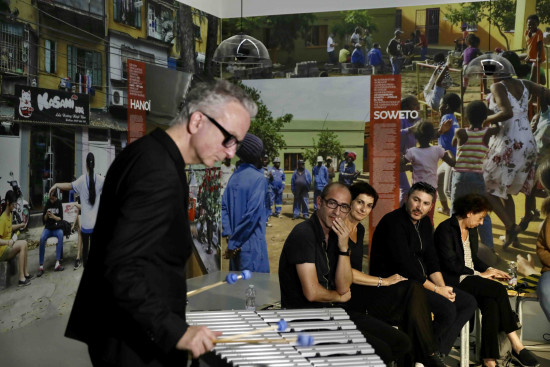
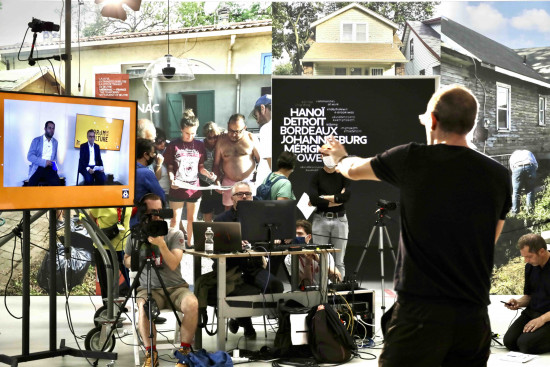
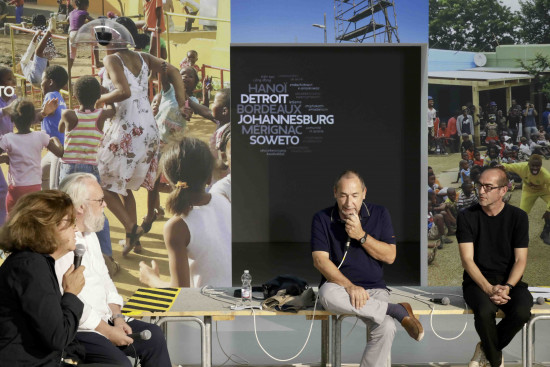
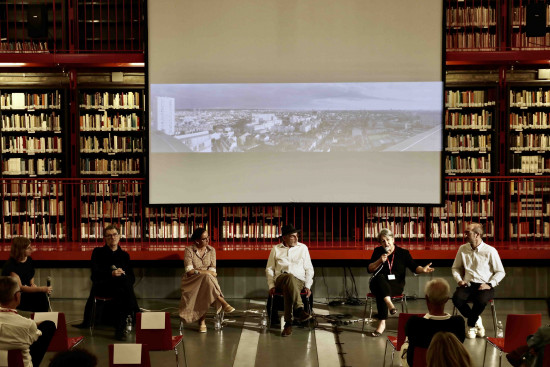













“The Communities at Work project proposes to examine the correlation between the architect’s know-how and residents’ living experience. This transversal approach to the profession attempts to shed light on the involvement of architecture in a contemporary world undergoing major changes.
The exhibition presents an architectural journey of the mind through the study of five specific cases on different continents: Europe, Asia, America, and Africa. The aim is to propose an optimistic view of the world where communities act directly on their own environment and daily life.
These approaches do not follow a formal theoretical scheme conceived by an architect but rather reflect the slow, multiple transformations of living spaces by their inhabitants. Communities seem to be the most relevant resources for transforming habitations, thus engendering a new way of conceiving a “spatial” contract resulting from bottom-up approaches.
Through precise and indeterminate architecture, considering the inhabitants’ performative aspect, usages, and life in all its forms enables the development of the project. Improvisation may lead to transforming inhabited sites that can be seen here as works in progress. Communities appropriate their environments through their actions and thus create a common space to discuss the management of their living environment.
Faced with human and material waste, we propose a change of perspective on life that already exists everywhere and a fine, precise, and flexible strategy to sublimate it. We present documentaries on communities working to transform their everyday environment, in France but also worldwide: Johannesburg, Bordeaux, Detroit, Mérignac, Hanoi… and other cases still to be found like so many nuggets enlightening us on the ability of the world to reinvent itself.
Similar situations, by a mirror effect, inform us about the phenomena at work, through their departure from the world’s norms and standardization. How do they live together and in what spatial contract do they engage? The lessons learned from these case studies should enlighten us from a critical viewpoint on how we live together.”
Christophe Hutin, curator